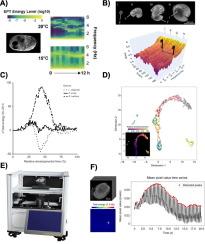Bioimaging and the future of whole-organismal developmental physiology
IF 2.1
3区 生物学
Q4 BIOCHEMISTRY & MOLECULAR BIOLOGY
Comparative Biochemistry and Physiology A-Molecular & Integrative Physiology
Pub Date : 2024-11-23
DOI:10.1016/j.cbpa.2024.111783
引用次数: 0
Abstract
While omics has transformed the study of biology, concomitant advances made at the level of the whole organism, i.e. the phenome, have arguably not kept pace with lower levels of biological organisation. In this personal commentary we evaluate the importance of imaging as a means of measuring whole organismal developmental physiology. Image acquisition, while an important process itself, has become secondary to image analysis as a bottleneck to the use of imaging in research. Here, we explore the significant potential for increasingly sophisticated approaches to image analysis, including deep learning, to advance our understanding of how developing animals grow and function. Furthermore, unlike many species-specific methodologies, tools and technologies, we explore how computer vision has the potential to be transferable between species, life stages, experiments and even taxa in which embryonic development can be imaged. We identify what we consider are six of the key challenges and opportunities in the application of computer vision to developmental physiology carried out in our lab, and more generally. We reflect on the tangibility of transferrable computer vision models capable of measuring the integrative physiology of a broad range of developing organisms, and thereby driving the adoption of phenomics for developmental physiology. We are at an exciting time of witnessing the move from computer vision as a replacement for manual observation, or manual image analysis, to it enabling a fundamentally more powerful approach to exploring and understanding the complex biology of developing organisms, the quantification of which has long posed a challenge to researchers.

生物成像和整个有机体发育生理学的未来。
虽然全息技术改变了生物学研究,但在整个生物体(即表型组)层面上取得的相应进展却没有跟上较低层次生物组织的步伐。在这篇个人评论中,我们评估了成像作为测量整个生物体发育生理学的一种手段的重要性。图像获取本身是一个重要的过程,但图像分析已成为研究中使用图像的瓶颈。在这里,我们将探讨日益复杂的图像分析方法(包括深度学习)的巨大潜力,以促进我们对发育中动物的生长和功能的了解。此外,与许多针对特定物种的方法、工具和技术不同,我们探讨了计算机视觉如何具有在不同物种、生命阶段、实验,甚至可以对胚胎发育进行成像的类群之间进行移植的潜力。我们确定了我们认为在我们实验室以及更广泛的范围内将计算机视觉应用于发育生理学的六个关键挑战和机遇。我们思考了计算机视觉模型的可移植性,该模型能够测量各种发育中生物的综合生理学,从而推动表型组学在发育生理学中的应用。我们正处于一个激动人心的时刻,见证着计算机视觉从替代人工观察或人工图像分析,发展到能够从根本上以更强大的方法探索和理解发育中生物体的复杂生物学特性,而量化这些特性长期以来一直是研究人员面临的挑战。
本文章由计算机程序翻译,如有差异,请以英文原文为准。
求助全文
约1分钟内获得全文
求助全文
来源期刊
CiteScore
5.00
自引率
4.30%
发文量
155
审稿时长
3 months
期刊介绍:
Part A: Molecular & Integrative Physiology of Comparative Biochemistry and Physiology. This journal covers molecular, cellular, integrative, and ecological physiology. Topics include bioenergetics, circulation, development, excretion, ion regulation, endocrinology, neurobiology, nutrition, respiration, and thermal biology. Study on regulatory mechanisms at any level of organization such as signal transduction and cellular interaction and control of behavior are also published.

 求助内容:
求助内容: 应助结果提醒方式:
应助结果提醒方式:


